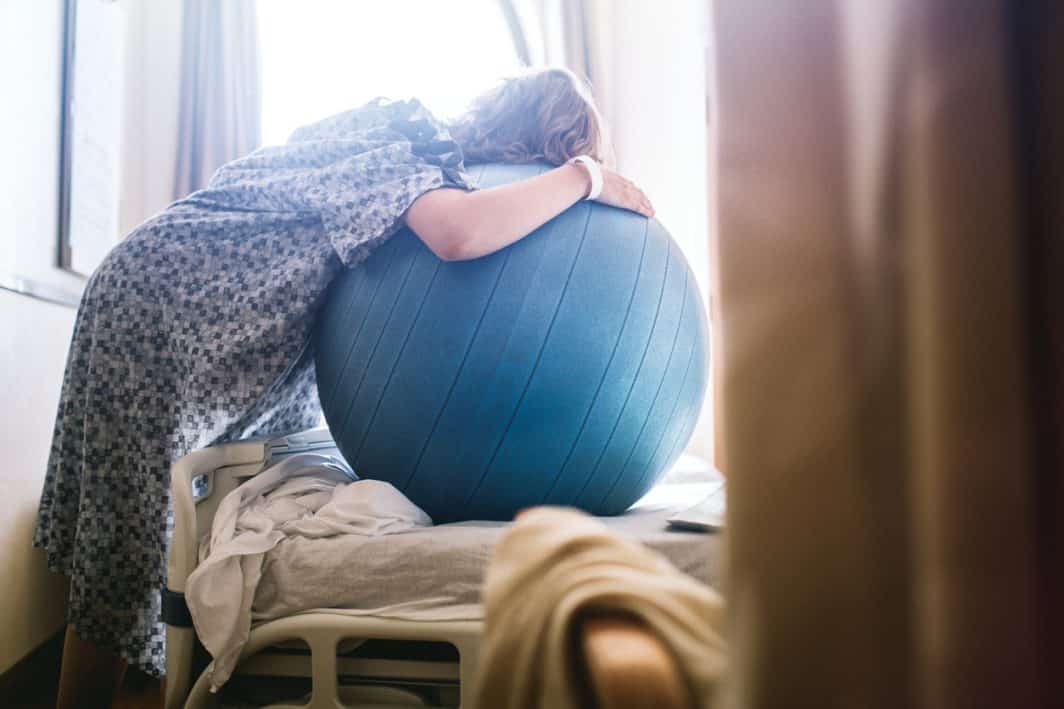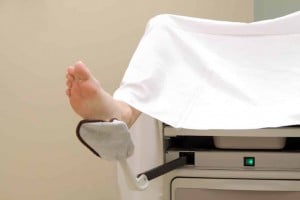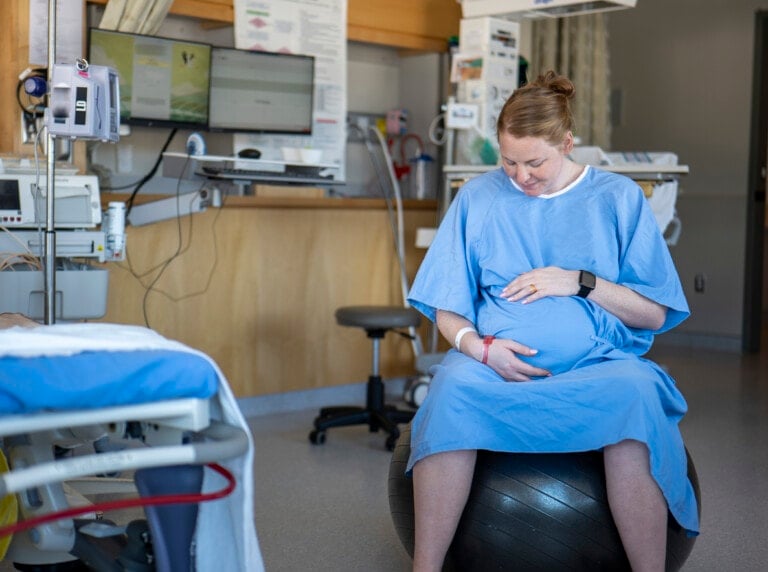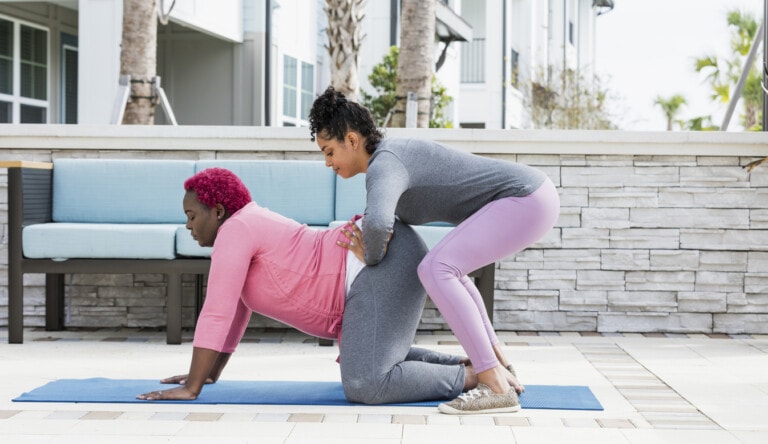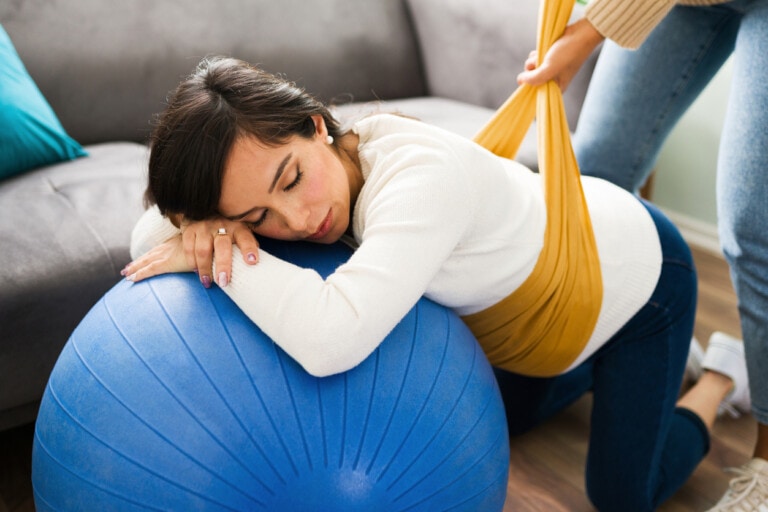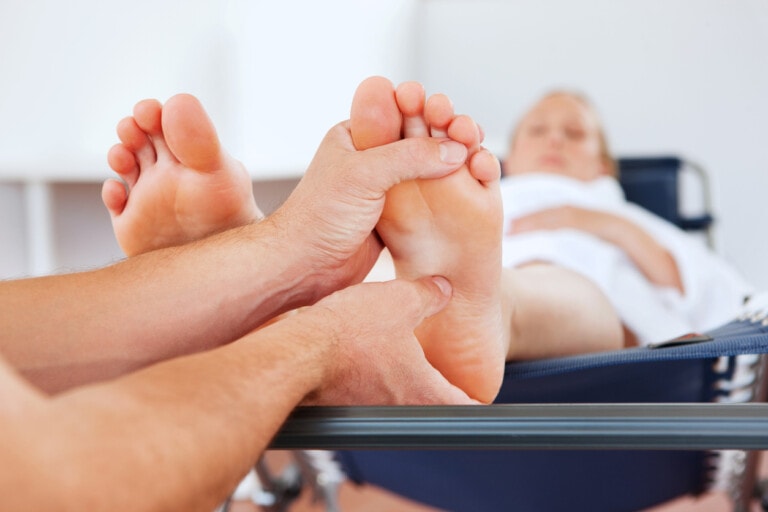Whether you have decided that you want a natural birth, a medicated birth, a home birth, a birth center birth, or a hospital birth, every expectant mother needs to have some tools to keep herself comfortable while in labor. Even if it’s just for the early labor part. (FYI, hospitals won’t admit you until you are in active labor. So you’re on your own in the beginning.) This is why it’s important to know what natural pain relief options are available to keep yourself as relaxed and comfortable as possible so you don’t rush to the hospital too early. Some of these are obvious options, and others are not. Here are 20 natural pain relief options available to you during labor.
1. Massage
Touch is incredibly powerful to the human mind and body. Studies show that women who received physical touch—such as massage—compared to women who didn’t during labor had 56% fewer c-sections, an 85% reduction in the use of epidural anesthesia, 70% fewer forceps deliveries, 61% decrease in the use of oxytocin, a 25% shorter duration of labor, and a 58% drop in neonatal hospitalization.1 That is amazing. In addition, touch releases oxytocin, the love hormone, to help relieve stress and fear for the laboring mom. It also helps turn off your pain receptors when in labor, so you don’t feel as much pain as you do without it. I honestly can’t recommend massage enough.
2. Aromatherapy
Essential oils have been used during labor for centuries. Some have proven beneficial during labor to help relax the laboring woman, relieve stress, act as a uterine tonic, stimulate circulation, and much more.2
Here are some essential oils that you can use during labor that can be helpful:
Lavender
This is one of the most popular oils used in labor. It can help with relaxation and promote calmness. The oil is also a painkiller that stimulates circulation and healing and may strengthen contractions.
Clary Sage
This oil is one that we use to strengthen contractions. (Avoid it during pregnancy before the baby’s due date.) It’s also an excellent oil for reducing anxiety.
Geranium
It helps to breathe and boosts circulation.
Peppermint
This oil helps with nausea and headaches.
Chamomile
Soothing and calming help to reduce tensions and anxiety.
Neroli
It calms and reassures as well as helps relax. It’s also a powerful anti-depressant.
Bergamot
An uplifting and refreshing oil.
Jasmine
It acts as a painkiller. Also known to strengthen contractions and can be used in a compress to aid in the delivery of the placenta.
Marjoram
Aids breathing and can help to lower blood pressure. It is also an effective pain reliever.
3. Cold & Hot Compresses
Cold and hot packs can reduce pain and increase comfort during labor and childbirth. Here’s how:
Cold
- Place a cold washcloth on the face, neck, and upper chest. This helps to refresh and relax the laboring mom.
- If she is experiencing nausea, place a cold washcloth across the back of the neck to help reduce the sensation.
- Placing a cold pack on the lower back can help with back labor or back pain.
- Place ice packs on the perineum immediately after the birth. This will help reduce swelling.
Hot
- Warm, wet towels, a hot pack, a hot water bottle, or a heating pad placed below the pregnant abdomen provide comfort in labor.
- Right before pushing, place a warm, wet washcloth on the perineum to reduce perineal discomfort and encourage softening and stretching of the perineal tissues in preparation for birth.
- A hot water bottle or hot pack can be applied to the back for back pain during labor.
- After birth, during breastfeeding, it helps to have a warm pack or a heating pad on the belly to help alleviate the cramping sensation when the uterus is shrinking back to its original size.3
4. Hydrotherapy
Hydrotherapy is the use of water for physical or psychological benefits. It is something that all women enjoy once they are in labor. The shower and tub are both fantastic. Here are some of the physiological and psychological benefits:
- Ease of movement with greater mobility due to buoyancy (when in the tub)
- Relaxation during and between contractions
- Safe and effective pain management
- Reduction of blood pressure
- A sense of control as the mother occupies her warm, private space
- It can help with cervical dilation
5. Music
Music is a wonderful tool when it comes to pain management. It helps distract the woman from pain and can create a relaxing experience. When music is playing, it helps a laboring woman breathe rhythmically with the music. It also gives her something to focus on rather than focusing on the contractions. Distraction is key when in labor. Check out these 100+ songs to put on your birth playlist.
6. Focused Breathing
Hopefully, your instructor will talk about breathing patterns in labor during your childbirth class. Breathing can help you focus and work with each contraction. Here are some benefits of practicing patterned breathing:
- The mother remains in a more relaxed state and will respond more positively to the onset of pain.
- The steady rhythm of breathing is calming during labor.
- Provides a sense of well-being and control.
- Increased oxygen provides more strength and energy for both the mother and baby.
- It brings purpose to each contraction, making contractions more productive.4
7. Counter Pressure
This is something that most laboring women enjoy since it relieves back labor and other area-specific discomforts. How do you do it? You apply heavy pressure on painful lower back areas or where you feel the contraction.
8. Acupressure or Reflexology
We use acupressure to relieve pain and increase contractions, among other things. It’s non-invasive and does not produce any undesirable or potentially harmful side effects that pharmacological pain relief can. You can treat various conditions by applying pressure on specific points with your fingers, elbows, palms, or blunt-tipped instruments. The primary goal of acupressure is to relieve pain and discomfort. Still, we can also use it to help babies descend and engage, dilate the mother’s cervix, naturally induce labor, and strengthen contractions in slow, non-progressive labors. Additionally, it can help alleviate nausea, combat fatigue in protracted labor, and assist posterior-positioned babies to turn to an optimal anterior position for an easier birth.
9. Focal Point
A great coping technique for labor is to have and look at a focal point. One of the wonderful things about focal points is that you don’t have to practice using them. When contractions get intense, you look at something and focus on it — a crack in the wall, a button on your support person’s shirt, or even one of your ultrasound pictures. Focal points work to deal with pain because of the Gate Control Theory.8 The brain processes the information you’re seeing, leaving less brain activity to process the pain you are experiencing. Since your brain’s not processing the pain, you’ll feel less of it.
10. Visualization
The opposite of using a focal point is using visual imagery. Visualization during labor is a highly effective pain management technique. For example, when you close your eyes and imagine a relaxing place—a sunny beach, a fireside, a bubbling brook, or a pristine lake surrounded by mountains. You can use some pictures from your favorite vacation spots to help you transport your mind there. Laboring women can visualize other helpful things, such as their cervix opening, their baby descending into the birth canal, or their breath as it enters and exits the body.
11. Position Changes
There are many benefits to changing positions throughout labor. Different positions can aid labor progress and reduce pain sensations by increasing the pelvic opening. Staying in one position for too long can stall the labor progress and make the contractions more painful over time. So make sure you change your position every 30 minutes or, at the longest, every hour.
- Best positions to do in early labor
- Best positions to do in transition labor
- Best positions to do in active labor
12. Vocalization
When we experience pain or discomfort, it’s normal to use our voices to help with the pain. For example, we all make noises when we stub our toes. Vocalization is a powerful tool. A birthing woman may choose to moan, softly sing, chant, or grunt. She needs to follow her body and know that making sounds is good, it’s natural, and it helps. No apologies are necessary.
13. Hypnotherapy
Hypnotherapy can be a fantastic tool during labor. With some practice throughout pregnancy, women can learn to become deeply relaxed and free of fear so the uterine muscles can work with minimal pain. Classes, videos, and audio tapes help women learn a conditioned reflex in which they can create their state of profound mental relaxation, physical relaxation, and concentration all by themselves. Two different options available are Hypnobabies and Hypnobirthing.
14. Birth Doula
Women need the information to have a better birthing experience and physical and emotional support. Studies have shown that women supported by other women—a doula—experience more positive, less complicated births and report more satisfaction with their birth experiences.5 They also show less use of interventions during birthing and quicker recoveries.
15. Dimmed Lights
The majority of women go into labor in the middle of the night. This is no accident. Our melatonin levels are increased at night and allow our bodies to relax and begin labor. When we are exposed to light in labor, it has been shown to slow contractions or even stop them altogether. A study at the University of Florida found that shining blue-green light in a pregnant woman’s eyes at night—like staring at a phone or computer screen—will suppress contractions. Turn the lights out, and you will be more comfortable, and it will help your labor progress.9
16. TENS Unit
TENS (transcutaneous electrical nerve stimulation) therapy has been around for years and is a tool women have used during labor as a natural pain reliever to keep them comfortable. It’s a small, hand-held machine that uses a mild and painless electrical current to relieve pain. It’s most commonly used for reducing back pain. If you are interested, you can find one here for $30.
17. Birth Ball and/or Peanut Ball
A birth ball is simply an exercise ball. The birth ball comforts and strengthens your lower back when sitting on it. Your pelvis is also better supported and symmetrical, which provides more comfort to laboring women.
A peanut ball is an exercise or therapy ball shaped like a peanut. A recent study found three noticeable benefits in women who used a peanut ball during labor: it shortens labor, shortens the pushing phase, and has helped reduce the number of c-sections.6
Women become tired in labor and sometimes need to sit or lie down. A birth ball or peanut ball can help them do just that but remain comfortable and help the labor progress.
18. Eat and Drink
Women have not been allowed to eat or drink fluids during labor for years. Some hospitals are continuing this today. But a new study by the American Society of Anesthesiologists suggests this may not be good. The study now shows most healthy women would benefit from a light meal during labor.7 They concluded that moms in labor need the same kind of energy and calories as marathon runners. Shocking! You are working so hard, and you need the fuel to continue and remain strong and comfortable. When you don’t have that fuel, it can reduce your contractions, leading to longer labor. So have light snacks and fluids to keep your energy up.
19. Use the Restroom
Using the restroom and emptying your bladder will help you feel more comfortable, but it will also ensure that your bladder is not holding your baby’s head up from pressing on your cervix and helping you dilate. Having an empty bladder will allow you to progress better. Going number two is also a good thing! It’s clearing everything out and making room for a baby to get through. Also, squatting on a toilet and relaxing your bottom is excellent for every mama in labor.
20. Walk or Move
It’s incredibly uncomfortable for a laboring woman to remain still while experiencing true labor contractions. The more you walk, move around, and are upright during labor, the more you encourage your baby to descend into the birth canal. Also, you’re keeping yourself as comfortable as possible throughout the process. So get up out of that bed and move!













